

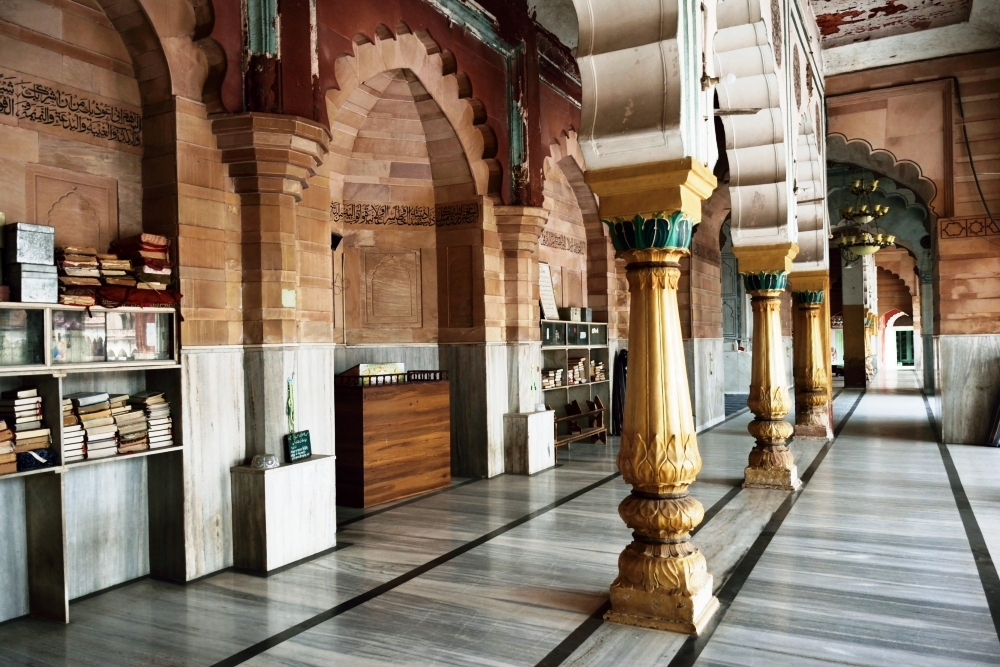
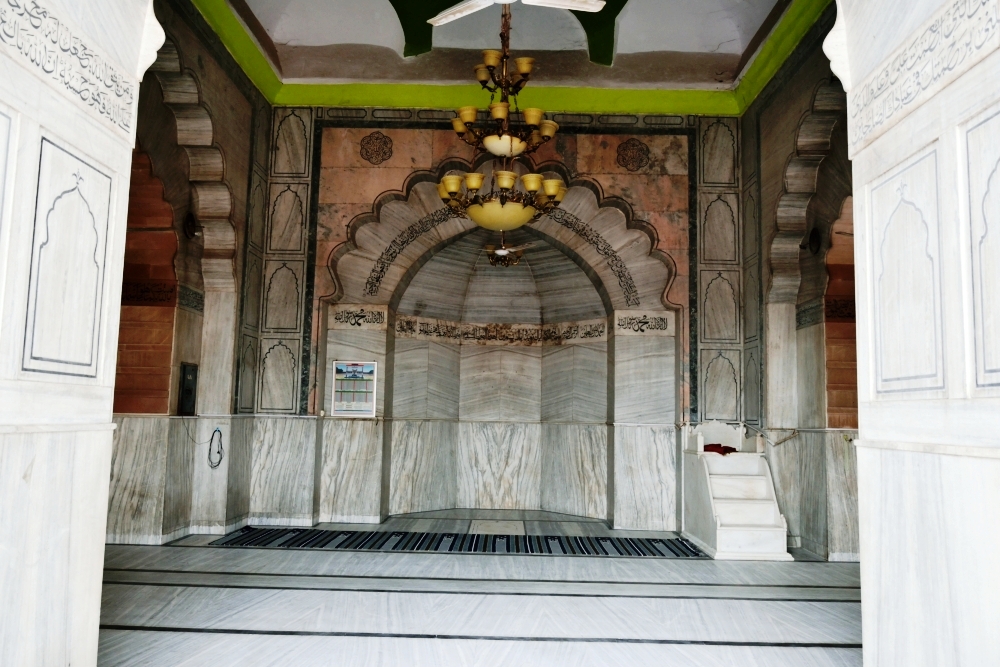
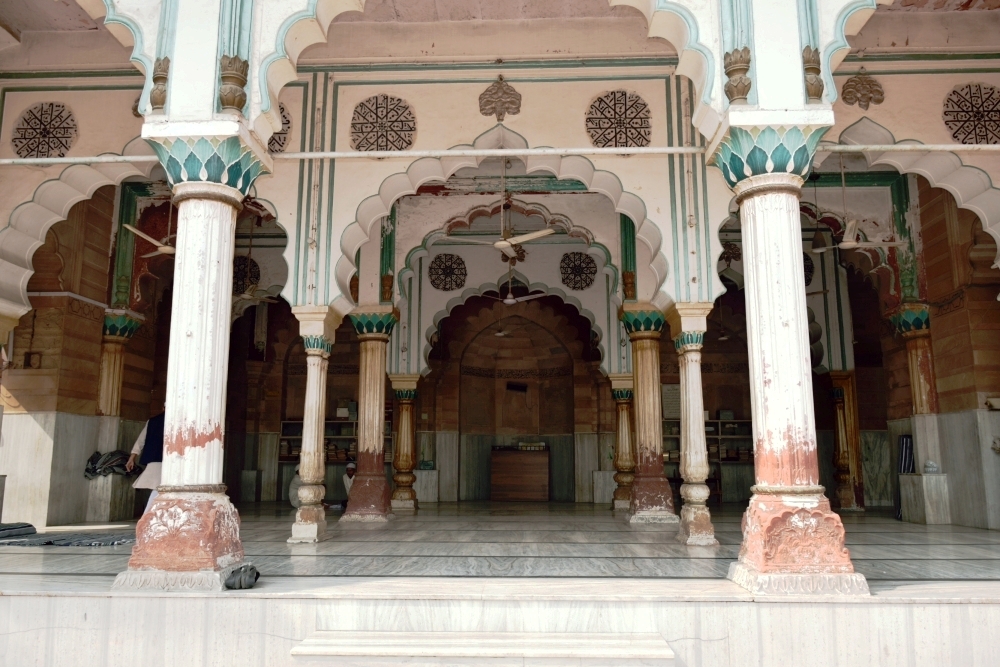
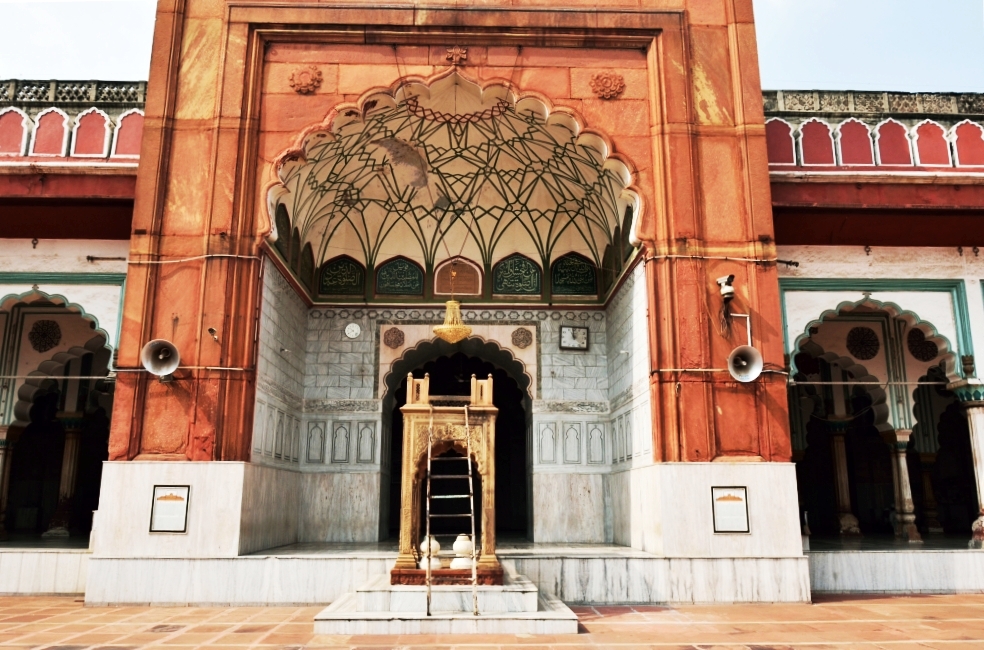
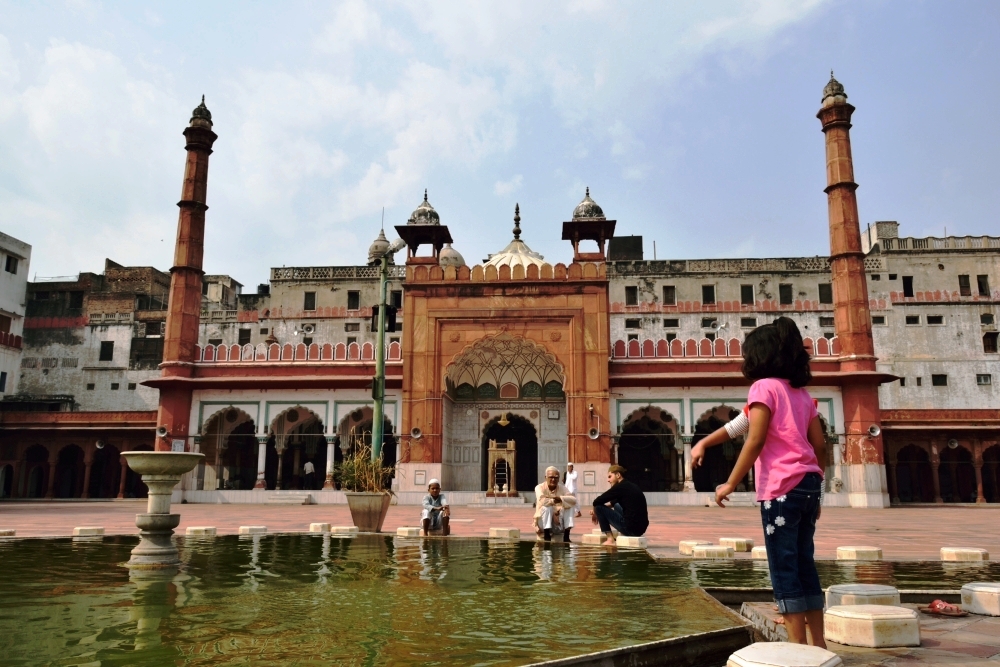
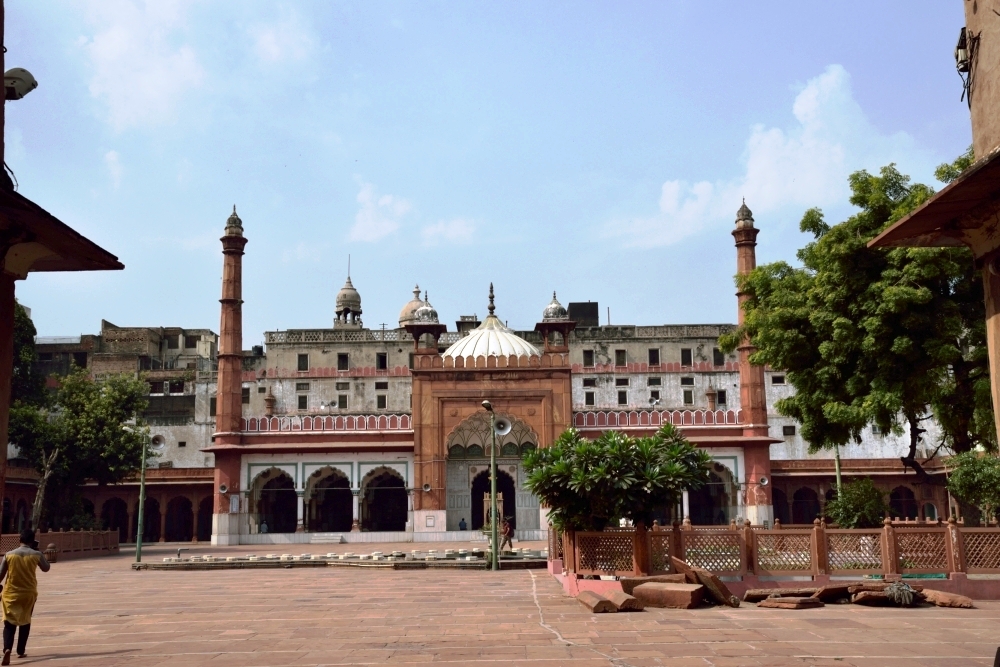
Approach: Approximately 1.6 km southwest of Old Delhi Railway Station and 1.2 km southwest of Chandni Chowk Metro Station. Airport: Indira Gandhi International (IGI) Airport Railway Station: Old Delhi Railway Station Bus Station: Old Delhi Bus Stand
The Fatehpuri Mosque, built in 1650 A.D. by Fatehpuri Begum, one of the wives of Emperor Shah Jahan, is a significant historical and architectural landmark in Delhi. Named after its patron, this mosque stands as a remarkable example of Mughal architecture and continues to be an important center for Islamic worship and cultural gatherings. Regular prayers are held at the mosque, along with grand celebrations of major Islamic festivals such as Eid-ul-Fitr and Eid-ul-Azha, which attract a large number of devotees. Architecturally, the mosque is an exquisite representation of Mughal craftsmanship. Situated prominently near the historic Red Fort, it features a striking eastern gateway that enhances its grandeur. The mosque spans seven bays in width and is primarily built using red sandstone, giving it a majestic presence. One of its most distinguishing features is its large central dome, which dominates the structure and is flanked by towering minarets. The dome, though made of plaster, has been crafted so skillfully that from a distance, it appears to be made of marble. It is crowned with an inverted lotus cresting, topped by a gilded pinnacle, adding to its regal aesthetics. The main entrance of the mosque is adorned with strips of white marble, which also accentuate the domes. On either side of the lofty central arch are three wings, each featuring three scalloped arched openings, which add to the mosque?s visual symmetry. The interiors of the mosque are elaborately decorated with vibrant paintings, calligraphic inscriptions, and intricate floral motifs. The arched entrance, walls, and fa?ade bear these inscriptions, along with golden Shahjahani columns that exhibit detailed ornamentation. The cylindrical fluted columns, adorned with multicolored floral designs in green, gold, and blue hues, create a dazzling contrast against the red sandstone background, making the overall composition exceptionally striking. Numerous arches within the mosque contribute to its impeccable symmetry, while the intricately designed central mihrab is illuminated with fluorescent lamps. The side indentations serve as storage for religious books and discourses. Along both sides of the mosque, rows of red sandstone pillared verandahs provide additional space for worshippers. The expansive courtyard, paved with stone, includes a large central water tank used for ablutions before prayer. Surrounding the courtyard are single and double-storied apartments that serve as shops and residences, contributing to the mosque?s continued relevance as a hub of community life. The construction materials used in the mosque reflect the architectural practices of the Mughal era. The core structure is built using Lakhori bricks, which are coated with plaster and red sandstone. Marble and sandstone are used as cladding materials, enhancing both durability and aesthetic appeal. The combination of these materials, along with the intricate artistic details, ensures that the Fatehpuri Mosque remains a timeless masterpiece of Mughal architecture.
Year of Built: 17th Century
Address: At the western end of Chandni Chowk, Shanjahanabad
Country: India
State: Delhi
District: Central Delhi
Pincode: 110006
Longitude: 77 13 21
Latitude: 28 39 24